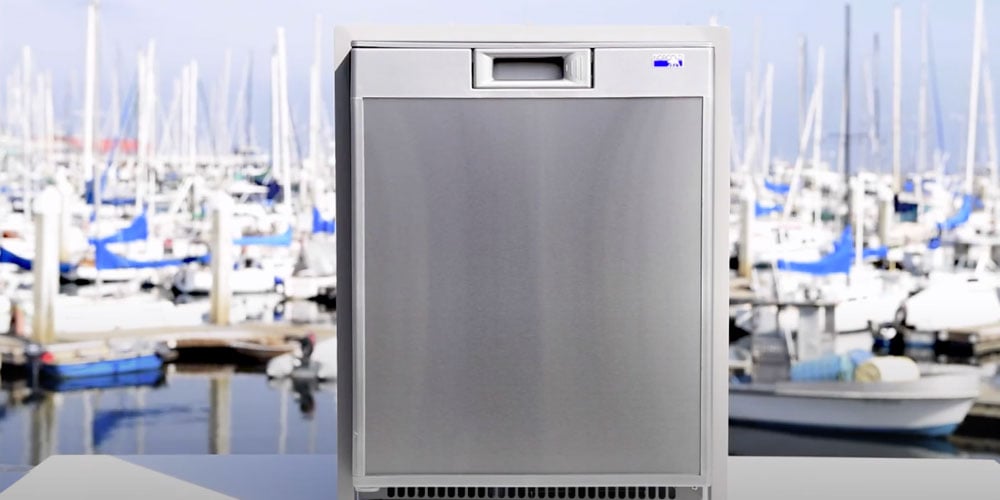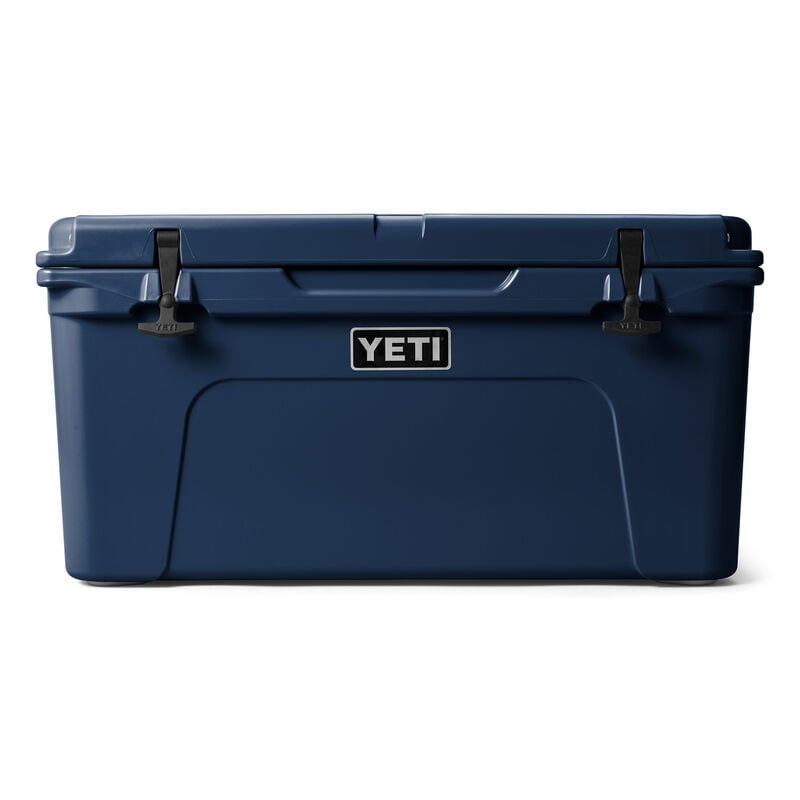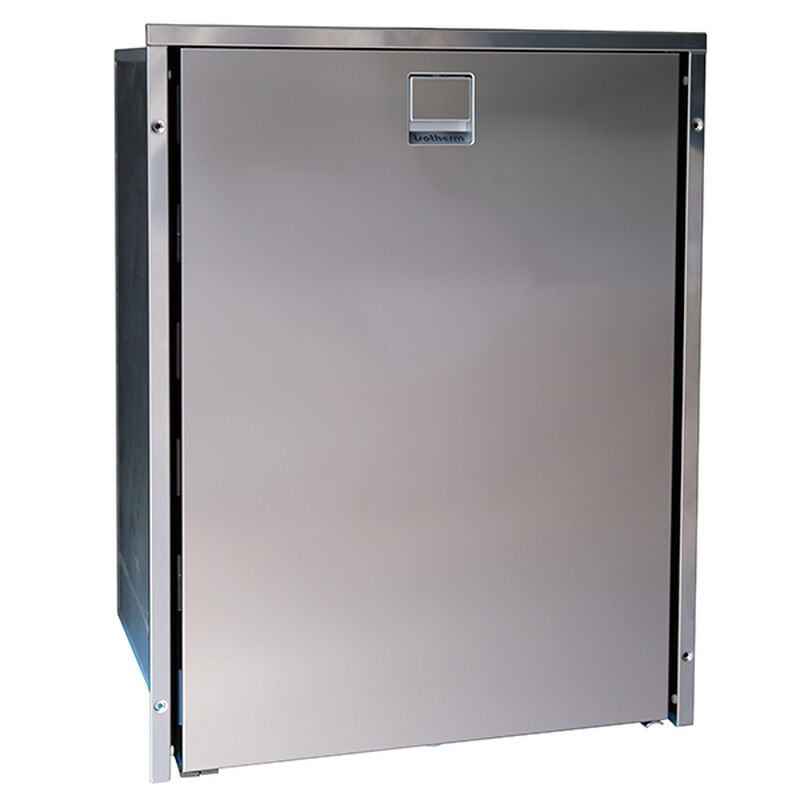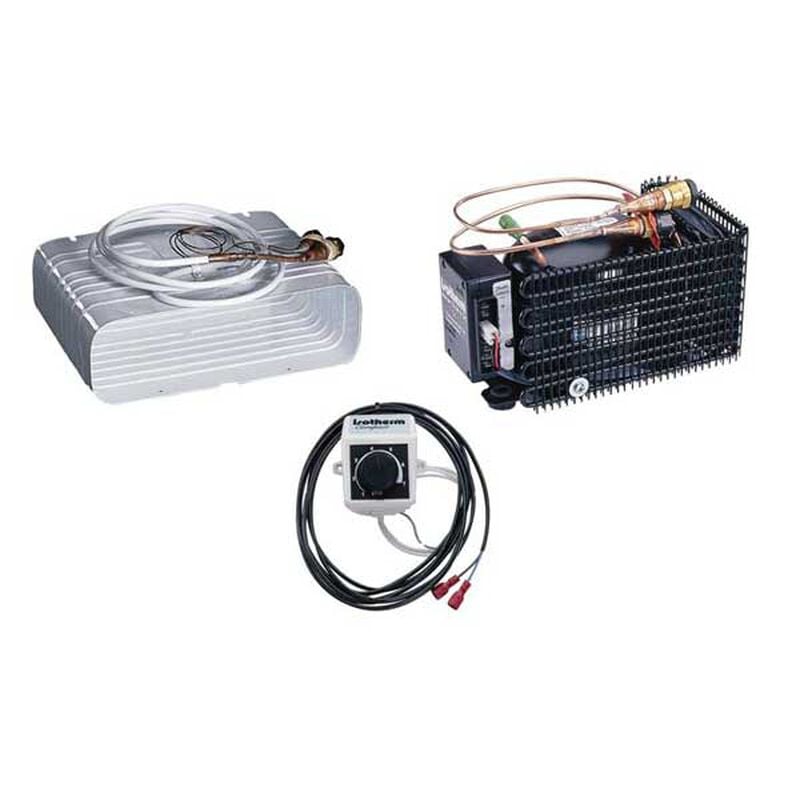
Keeping it Cold
Refrigeration is the cooling of a substance below the ambient temperature. Refrigerators and air conditioners do not create cold, but they remove heat from one location and move it to another. All boaters appreciate refrigeration, from the most basic backpack soft cooler up to the most elaborate holding plate system for long distance cruisers. Without getting too technical, we'll discuss what type is right for your boating needs.
- Refirgeration 101
- Questions to Ask
- Types of Refrigeration
- DIY Systems
- Holding Plate Systems
- How Cold Should it Be
- Icebox/Refrigerator Insulation
Refrigeration 101
Refrigeration systems generally include five components: a compressor (essentially a pump), heat exchanger pipes outside the unit (the condenser), an expansion valve, heat exchanger pipes inside the box with your food (the evaporator), and a nontoxic fluorinated-ethane chemical (R-134a) called the refrigerant. A thermostat controls the system.
Inside this closed system, the refrigerant gets converted from a gas to a liquid and back again to a gas, and while undergoing this change of state it releases and absorbs heat. The process starts with the compressor pressurizing the refrigerant. The hot high-pressure gas travels through a set of serpentine or coiled copper condenser tubes where it condenses into liquid form and releases its heat (the latent heat of condensation) into the environment, aided in this cooling by a fan, a seawater cooling system for tropical climate, or both air and water cooling (in larger systems like the SuperColdMachine).
Emitting through a small orifice called an expansion valve into the low-pressure side of the system, the refrigerant morphs once more into a gas, and absorbs heat while changing state. Traveling through another coil of copper or aluminum tubing inside the refrigerated compartment, the expanding chemical sucks heat from the large surface area of the evaporator. Like the liquid propane canister on your barbecue, the refrigerant gets super cold as it becomes a gas and, miracle of miracles, chills your Budweiser, quart of milk or bottle of chardonnay.
The vacuum from the compressor sucks the cold gas back around, and the cycle repeats as long as the compressor is running. The refrigerator box heats up (at a rate depending on the size of the box, the efficiency of the insulation, and the ambient temperature) and compressor cycles on, cooling it down, running typically about 20 to 30 minutes of every hour. This is called the duty cycle.
Qualifying Questions
What type of boating do you do?
Your refrigeration demands will differ depending on how much time you spend on your boat, its size, whether it is a power or sailboat, and the climate—temperate or tropical. Many of us dream of an around–the–world cruise, but in reality most of us cook on board infrequently. An ice chest is fine for day/weekend use and is reasonably priced. For outings of longer duration, powerboats operate built–in front–loading refrigerator/freezers. Sailboats, because they spend time at angles of heel up to 30°, use refrigerators that open from above, usually an icebox conversion system.
Will it fit in your space?
Fitting your refrigerator in its location may be a matter of exact size, if you are replacing a built-in refrigerator/freezer with specific cutout dimensions, placing an ice chest behind the companionway ladder or fitting a remotely mounted compressor under the bench seat in the galley. In these cases, you need to take measurements before purchasing the unit.
What type of power?
The most common options are 12V or 24V DC, 110V AC or engine-driven. Most electric front-loading refrigerator/ freezers and portable compressor cooler/freezers operate on "universal voltage" and can automatically switch between AC shorepower and DC batteries. Dometic and Norcold refrigerators include electronic control modules that automatically switch between 12V and 24V DC operation. Most refrigerators draw about 5A when the compressors are running (during the "duty cycle"), and their thermostats keep them cycling on and off at a rate dependent on the efficiency of the insulation and the ambient temperature.
Power availability varies depending on boat type. Powerboats generate electrical power constantly while underway, so their only limitations occur when anchored and away from shorepower, operating on the House batteries. Sailboats, especially long-distance cruisers, require highly efficient systems to minimize the need for battery-charging engine operation.
Types of Refrigeration
Ice Chests

A quality ice chest like this Tundra® 65 from YETI is a great option for shorter trips.
Most weekend boaters can keep their food cold with a portable ice chest or built–in icebox–both of which are simple, inexpensive, and have no mechanical parts to break down. Fishermen use ice chests for storing their catch or keeping frozen bait fresh. Ice chests are useful as supplemental food storage space onboard larger boats for extending cruising range.
Their capacity is rated in quarts. Each quart of the volume is equal to 1/30 of a cubic foot, or 7.5gal./cu. ft. A 60qt. ice chest holds a volume of about 2 cu. ft. The best-insulated Marine Series models are rated to hold ice for five days at 90°F. We have found this claim to be reasonably credible during hot-weather trailer boating excursions if we're careful about keeping the box closed as much as possible.
Portable Refrigerator/Freezers

The CFX3 35 Portable Refrigerator has a capacity of 36 liters.
Portable compressor cooler/freezers like the Dometic Coolmatic CF Series portables are compressor-driven refrigerator/freezers with electronic temperature regulation and reliable Danfoss BDF compressors. Capable of freezing to 0°F, they typically reach freezing temperature in about an hour. Pluses are their performance, AC/DC "universal voltage" operation, and portability, making them useful in the SUV as well as the boat. Negatives are their weight (44lb. for a 52qt. size, plus your food, for example) and relatively high cost. Dometic manufactures models ranging in size from 18qt. up to 112qt.
Front Loading Refrigerator/Freezers

Front loading marine refrigerators, like this one from Isotherm, are great to have on board.
Icemakers
Popular on large boats, icemakers produce far more ice in a day than a conventional freezer. Large boats are frequently used for entertaining, and these under-counter 110V or 220V AC units produce over 20lb. of ice daily, drawing a modest amount of current (2.4A @12V DC for the Raritan Icer-Ette).
Icebox conversions

Icebox conversion kits like this one from Isotherm have everything you need to convert an existing icebox on your boat into a refrigerator/freezer
These units convert an existing icebox (generally on a sailboat) into a refrigerator/freezer. The compressor and evaporator units are sold separately, allowing you to choose a compressor to match performance requirements and an evaporator of the style and size to fit your existing icebox. The compressors and lines come precharged with ozone-friendly R134a coolant and have special quick-connect fittings for assembly. These units are versatile, efficient and compact but they are fairly expensive and require a well-insulated icebox. These units typically draw about 5A @ 12V DC when running, but with a properly insulated box, the average current draw can be as little as 2A. Typical refrigerator duty cycle for a ColdMachine or SuperColdMachine with 3" insulation runs the compressor 40% of the time.
Air-cooling vs. water-cooling: Remember how we told you that refrigeration systems don't create cold, but move heat from one location to another? This concept is very important when designing an icebox conversion system. Two components of your system, the compressor and the condenser, get hot and require a cooling system to dissipate their heat. Your two choices are air-cooling and water-cooling.
Air-cooled compressors work well in cool or temperate climates. Combination air/water cooled compressors are best and will provide longer service life if you install the compressor in the engine room or other confined space, or travel to tropical climates.
Air-cooled condensers become less efficient as the ambient air temperature goes up. The heat removed from the icebox by the evaporator is transferred to the air around the condensing unit. At temperatures over about 95°, the unit will run almost constantly, use up your battery power and not cool adequately. Water cooling mode will produce shorter "on" times and lower average amp draw. In tropical conditions, the total daily power consumption can be reduced by 25 to 40%.
Battery capacity required: Installing a 12V conversion system for a typical 35' sailboat is likely to cause a tripling of the daily drain on your battery system. For example, Dometic recommends the following amp/hour capacities for the house bank that serves their ColdMachine: "Casual cruiser" 25'–35', seldom away from dock longer than overnight... minimum 200Ah; "Serious cruiser" 30'–50', often cruising for a week or more ... minimum 300Ah; Charter yacht or tropics–based "serious cruiser" operating in hot climates and requiring greater quantities of ice cubes and frozen foods... minimum 400Ah–with high output alternator and battery monitoring system.
Holding Plate Systems
Holding plate systems, similar to icebox conversions, achieve the highest efficiency, making units like those from Technautics popular for long-distance cruising. A holding plate (or cold plate) contains the evaporator coils encased in a metal box filled with a eutectic solution (an "easily melted" substance with a freezing temperature below 32°F, similar to the "blue ice" gel used in cold packs).
The plate is 1" to 4" thick, quite different from the thin and more fragile aluminum evaporator plates found in household-style units and icebox conversion kits. The "duty cycle" or frequency of compressor operation is dependent on the ambient temperature, the size and insulation efficiency of the icebox.
Holding plate systems are expensive, but use about half the amp hours of a typical icebox conversion system, and have duty cycles of a couple hours per day. We can order 12V, engine driven and combination 12V-engine driven systems from Technautics.
Vacuum panels that can be retrofitted inside the old icebox, such as Technautics VacuPanels, are the current state of the art insulating material. They're available in 12"x 12" or 12"x 24" sizes, and 1/2"or 1" thickness. They're somewhat fragile, and one sharp protrusion such as a sheet metal screw driven into the wrong spot can put a vacuum panel out of service. Many cruisers use them as additional insulation in combination with several inches of foam, so there is still some effective insulation in the box if the vacuum panel fails.
How cold should it be?
Bacteria are present in virtually all foods. Cold does not kill the bacteria, it simply slows their growth. The colder the temperature the slower the growth. Most foods will last a reasonable length of time, about two weeks, in a refrigerator at 40° F (4°C).
For longer storage, it is necessary to freeze the food. Meat will keep for several months at 0° F (-18°C). In general, if your freezer is cold enough to keep ice cream frozen, it is cold enough to preserve meat.
Icebox/Refrigerator Insulation
The most effective way to improve the efficiency of an icebox or refrigerator is to increase the insulation. For our technical readers the heat transfer equation is:
| Q= (A)(K)(dt)/T | |||
|---|---|---|---|
| Where: | Q | - | heat transfer in BTU per hour |
| A | - | total outside surface area of box | |
| K | - | insulation factor | |
| dt | - | inside/outside temperature difference | |
| T | - | insulation thickness in inches | |